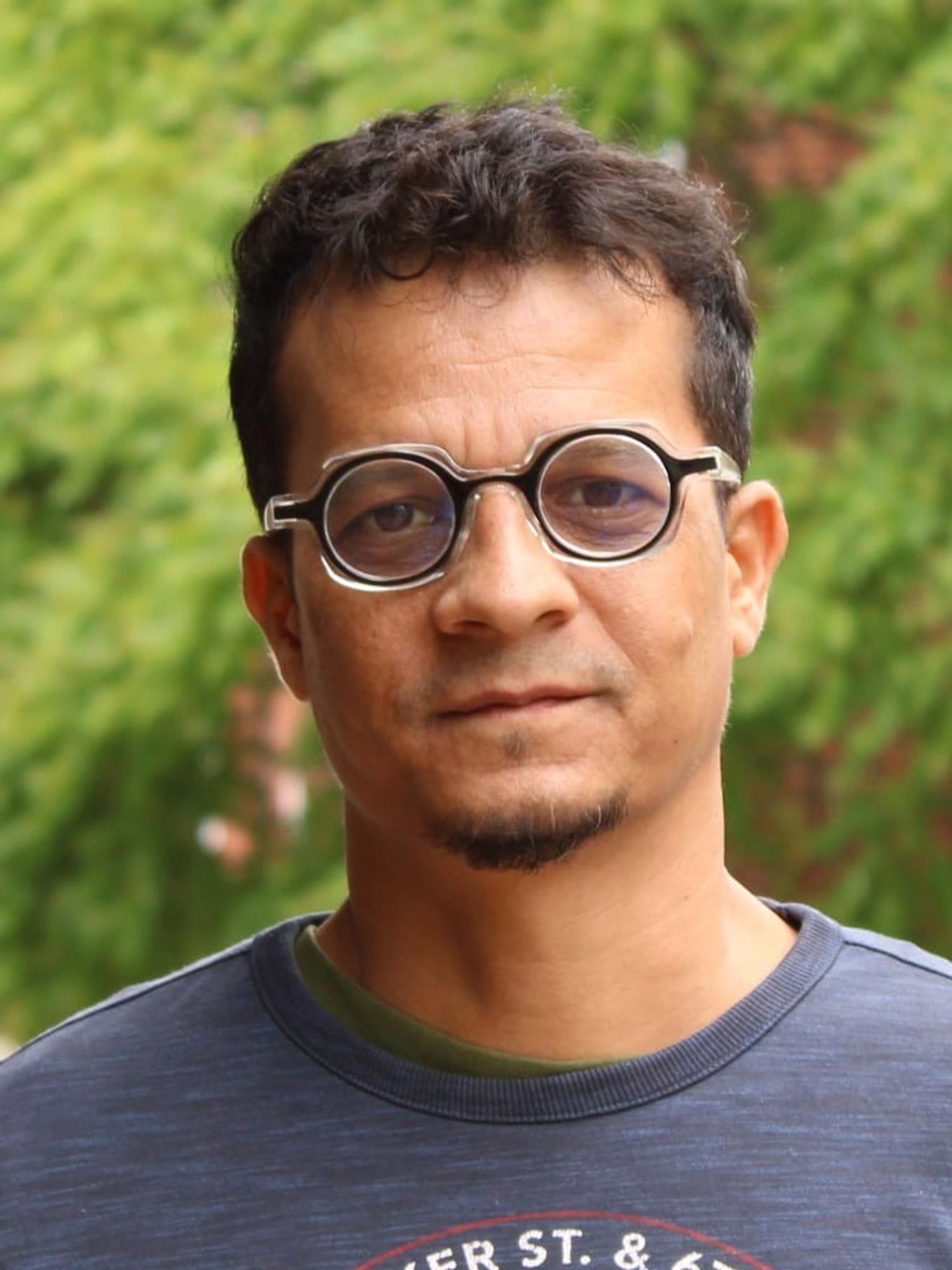For the first time, London’s Mall Galleries will host a major exhibition dedicated entirely to Pichvai paintings, an intricate devotional textile tradition from Rajasthan. Titled Feast, Melody and Adornment (2–6 July 2025), the show brings over 350 artworks to a British audience, highlighting the evolution and global revival of this 400-year-old art form.
Curated by Pooja Singhal, founder of Udaipur-based atelier Pichvai Tradition and Beyond, the exhibition is being hailed as the most ambitious contemporary presentation of Pichvai to date. In fact, it marks a powerful shift in how Indian temple art is being experienced: not in hushed museum archives, but as a vibrant, living tradition reaching new audiences.
A sacred origin in Nathdwara
Pichvai, meaning “behind the idol”, originated in the 17th century in Nathdwara, a temple town near Udaipur. Artists created these large-format cloth paintings for daily darshans (ritual viewings) of Srinathji, a baby Krishna deity. These works captured moments of shringar (adornment), bhog (feasting) and raag (devotional music), and were displayed behind the idol in the sanctum.

Over time, these temple painters formed a tight-knit community. “My mother collected Pichvais, and my grandfather sold them,” says Singhal, whose childhood was steeped in this visual tradition. “I literally grew up surrounded by them.”
Layers of meaning, scale and detail
Though often mistaken for simple Krishna depictions, Pichvais are complex, layered artworks. They can include over 100 miniature elements like cows, lotuses, chariots and gopis, often spanning six to eight feet in height. Some motifs, like lotus blooms, are symbolic too, evoking cooling relief during Rajasthan’s scorching summers.

“Pichvai is unique because it marries the scale of a textile with the detailing of miniature painting,” explains Singhal. “Every inch has a hundred layers. You can stand there for hours and keep discovering new stories.”

Schools of miniature painting from Nathdwara, Bundi, Jaipur and Kishangarh influence the styles on display. Some resemble aerial maps of temple festivals; others evoke the rhythm of music or the warmth of food being served to devotees.
Reimagining tradition for a global audience
Singhal’s goal since launching Pichvai Tradition and Beyond in 2010 has been to preserve traditional methods while adapting them for modern collectors. Her key innovations include:
Grayscale reinterpretations for minimal, contemporary homes

Restored sketchbook folios, recreating daily temple scenes from archival fragments

Pastel colour palettes and geometric cow motifs to appeal to wider interiors

Framing artworks individually, allowing Pichvai sketches to stand as contemporary works in their own right

These modern adaptations haven’t diluted the tradition; they’ve helped it grow. One of the atelier’s works was even selected by Prime Minister Narendra Modi as a diplomatic gift to a foreign leader, an unexpected milestone that, according to Singhal, affirmed the relevance and stature of this centuries-old tradition in the modern world. “When a Swedish collector bought a grayscale Pichvai at the India Art Fair, I realised the form can travel,” she says.

A new system for old skills
Breaking away from the age-old guru–shishya (teacher–disciple) model, Singhal’s atelier now works more like a studio collective. A team of 10–12 artists from different miniature schools collaborate on large and small format works.
“Many painters had no work,” she says. “We started smaller Pichvais and even Deccan-style gold miniatures. It gave artists a viable livelihood.”

Bringing Pichvai to Britain
Shipping 350 works across continents has taken six months of preparation. The Victorian-era Mall Galleries, located near Trafalgar Square, has never hosted an Indian temple art show of this magnitude.
The artworks are split across three interconnected rooms, themed around Raag, Bhog and Shringar. Alongside the art, there will be over 15 events including artist walkthroughs, collector previews, academic panels, and auctions benefiting Rajasthan’s artisans.

“I’ve never worked at this scale before,” Singhal admits. “But if every visitor leaves feeling connected to the art, it’ll be worth it.”
What it means for British-Indian audiences
This is the first exhibition in the UK to exclusively showcase newly created Pichvais, not just preserved artefacts. For British-Asian families who’ve seen such works in temples or family homes, it’s a rare chance to see them celebrated on an international platform.
“Many have never seen this tradition at such scale or detail,” says Singhal. “And now, these living artists, whose families have painted for generations, get their moment.”
Exhibition details
📍 Mall Galleries, The Mall, London SW1Y 5BD
📅 2–6 July 2025
🕙 10:00–18:00 daily (until 19:00 on 4 July)
🎟️ Admission: £12 (₹1,280), £8 (₹850), Free for Under 12s
🔗 More info: mallgalleries.org.uk













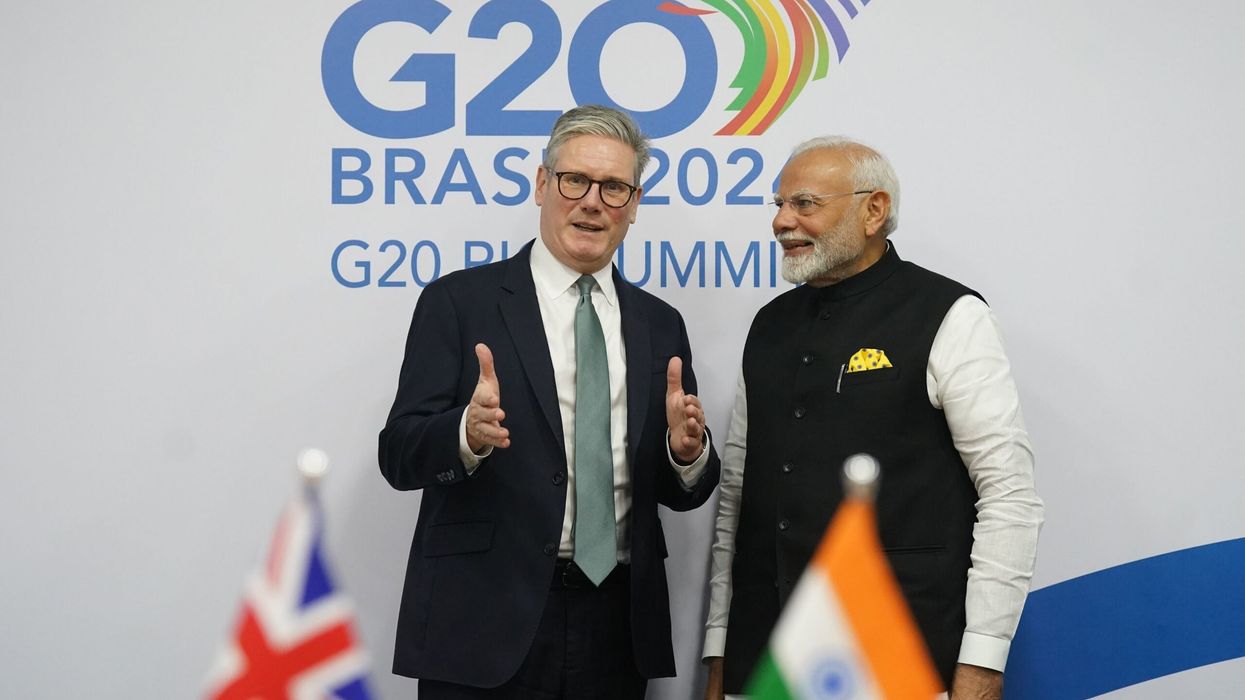





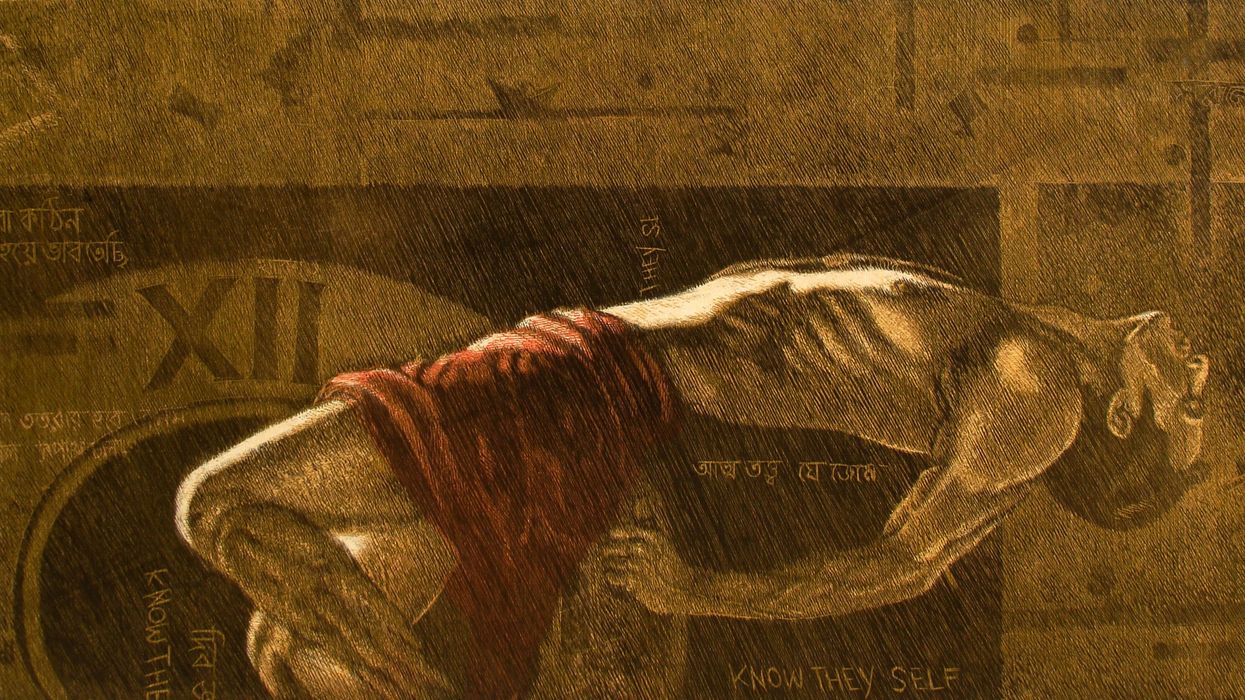
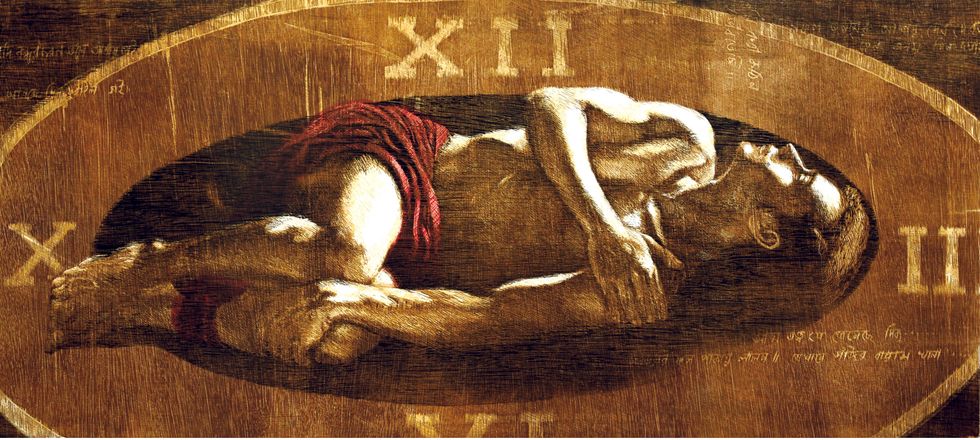 A clock is ticking away in the background of a darkened rectangleManzu Islam
A clock is ticking away in the background of a darkened rectangleManzu Islam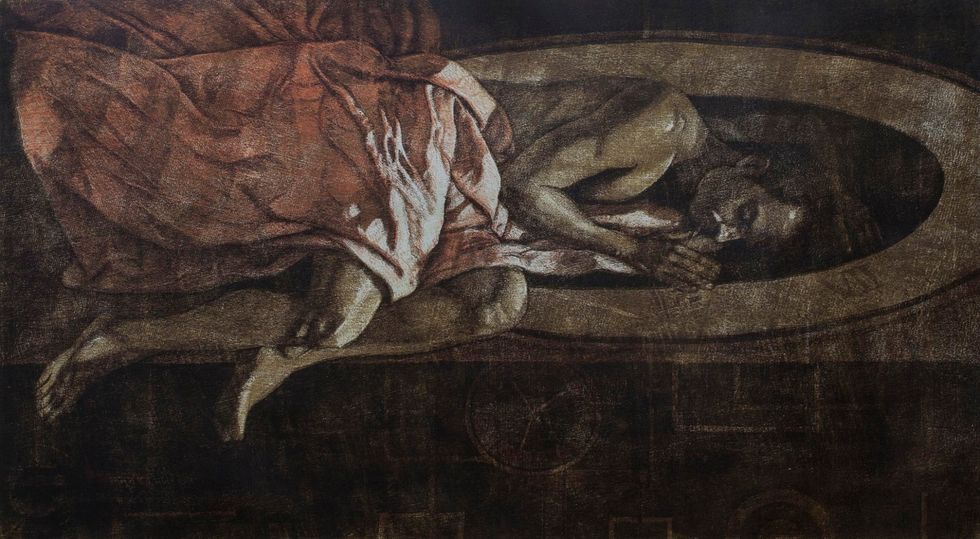 The body in its stylised repose is already stirring to take flightManzu Islam
The body in its stylised repose is already stirring to take flightManzu Islam